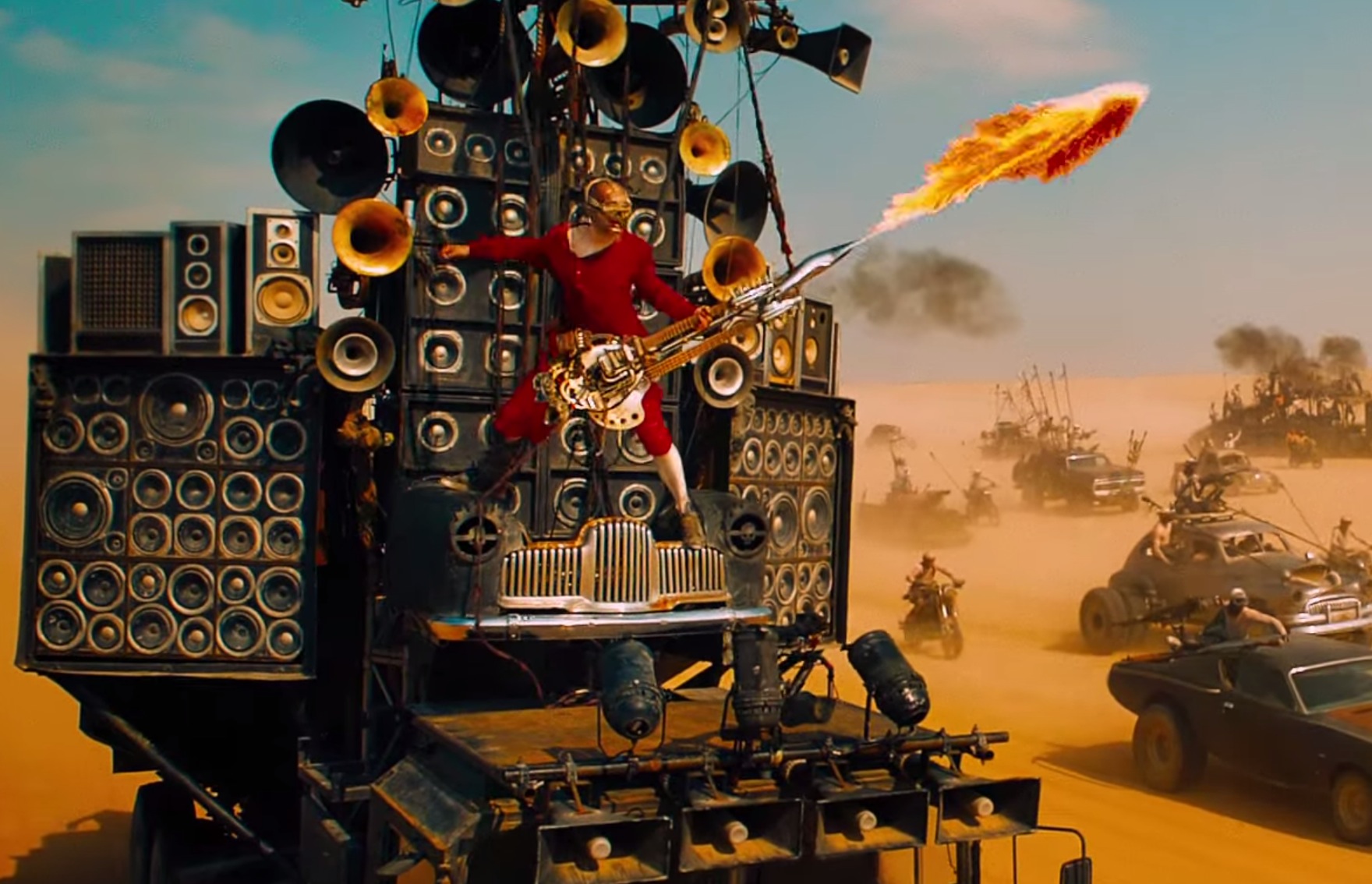 Try as they might, studios can’t consistently tell what audiences will latch onto. For example, the Captain Phasma character in "Star Wars: The Force Awakens" was intended to be a Boba Fett-esque enigma that would appeal to ‘Star Wars’ superfans, but it was the young, human leads plus BB-8 that moviegoers went for. When it comes to "Mad Max: Fury Road," it wasn’t the titular character that resonated most deeply with the audience —rather, it was Charlize Theron‘s Furiosa. And the guitar-slinging The Doof Warrior was a huge hit with audiences: the fire throwing rocker adds a surreal layer to the non-stop action film that’s easily one of the most memorable elements. According to director George Miller, itseems that the character had an even more important position in the picture initially.
Try as they might, studios can’t consistently tell what audiences will latch onto. For example, the Captain Phasma character in "Star Wars: The Force Awakens" was intended to be a Boba Fett-esque enigma that would appeal to ‘Star Wars’ superfans, but it was the young, human leads plus BB-8 that moviegoers went for. When it comes to "Mad Max: Fury Road," it wasn’t the titular character that resonated most deeply with the audience —rather, it was Charlize Theron‘s Furiosa. And the guitar-slinging The Doof Warrior was a huge hit with audiences: the fire throwing rocker adds a surreal layer to the non-stop action film that’s easily one of the most memorable elements. According to director George Miller, itseems that the character had an even more important position in the picture initially.
READ MORE: Review: George Miller’s ‘Mad Max: Fury Road" Starring Charlize Theron & Tom Hardy
In a lengthy chat with THR at Loyola Marymount’s School of Film and TV, Miller revealed that he originally wanted the only music in the film to come from Doof’s guitar.
"…for me, this was a silent movie with sound. Initially, believe it or not, I didn’t want to have music. I thought the Doof Warrior and the drummers and the sound of the vehicles would be enough of a soundscape to basically tell the story. And then there would be music once the characters started to find some affiliation, particularly Max and Furiosa, and Max in particular was more humanized. I thought we’d bring in some musical element. And so this movie is a great opportunity for sound. And there was a lot of work in that regard," he said.
"But then I heard some music. Someone from Warner Bros. sent me some music Junkie XL had written….And he’s extraordinary. He’s a kind of polymath: he studied as a lawyer while he was doing his music. He’s big into sound design and he mixes so much of his own stuff. And he can write any kind of music when tasked to do it. He can write beautiful, lyrical music and long progressions of intense, intense action," Miller continued. "He’s the first composer I’ve ever worked with —and I’ve been very privileged to work with great composers— who can actually explain to me the mathematical underpinnings of musical progression, which is wonderful. He can show me Mahler and say, ‘this is the mathematical progression.’ Musicologists do this all the time. And so he was very, very significant in that process. And he brought on guys like Chris Jenkins, who mixed the music and the dialogue —and everybody was really aware of the opportunities we had….a lot of thought was put into it."
For all the spectacle on screen, Miller was quite cognizant of not creating a auditory maelstrom and was well aware how too much could deaden the impact. "….silence is very incredibly important. In the test screenings, I thought there was a tendency for the audience to applaud, and then the applause would fall away. And then you see that there’s a shot of Max as he wakes up out of the sand. It holds for a very long time. And I thought, why are they not applauding, continuing with applause, which is a lovely thing to have in the cinema? And I realized it didn’t become completely silent," he said. "There was a little sound, little, sustained, droning sounds that had continued right through into the next scene. So that caught the audience’s ear and it led to an expectation of something else about to happen, rather than we were coming to a full stop. And by making it completely silent, with not one bit of sound, it sort of gave permission for the audience to applaud. And that was really interesting to me. I didn’t think a sound I could barely hear influenced the way that the audience would respond to them."
Maybe on the upcoming Blu-ray with the black-and-white version of "Mad Max: Fury Road," Miller will remix the sound for that cut. It certainly would be interesting to see how his first concept for the sound of the movie would’ve played out.
Check out the full interview on THR, and watch Miller talk about his relationship with Stanley Kubrick below.

